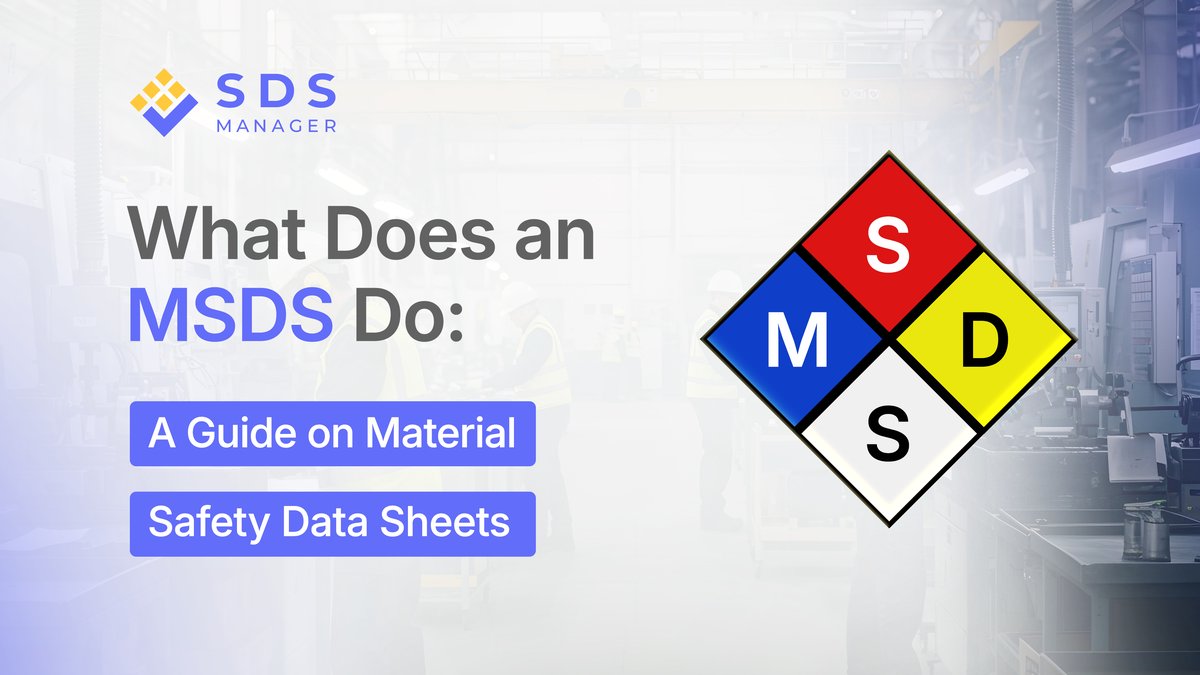

Material Safety Data Sheets (MSDS) are documents that help communicate chemical hazards in the workplace. These sheets were designed to give both employers and workers the information they need to handle chemicals safely.
Structure of an MSDS
Material Safety Data Sheets (MSDS) are designed to protect employees, contractors, and emergency personnel (paramedics or firefighters) by offering clear details about: what the chemical is and its potential hazards, safe handling, storage, and disposal instructions and steps to take in case of an accident or exposure. This information is organized into different sections, making it easy to find the details you need.
The structure of an MSDS is not globally standardized, but most MSDSs have between 8 and 16 sections, depending on the country or the manufacturer. For example, a typical 9-section MSDS format in the UK includes:
| Section | Description |
|---|---|
| Product Information | Basic details about the chemical or product, including its name, use, and supplier contact info. |
| Hazardous Ingredients | Lists the dangerous components and their concentrations, helping users understand potential risks. |
| Physical Data | Describes the product’s physical properties, like appearance, smell, boiling point, and density. |
| Fire or Explosion Hazard Data | Explains how the product might catch fire or explode, and gives advice on suitable extinguishing methods. |
| Reactivity Data | Outlines how the substance reacts with other chemicals or under certain conditions, and any instability concerns. |
| Toxicological Properties | Details the health effects of exposure, including symptoms and possible long-term effects. |
| Preventive Measures | Offers guidance on safe handling, storage, and protective equipment to reduce risk. |
| First-Aid Instructions | Provides step-by-step actions to take if someone is exposed, including when to seek medical help. |
| Preparation Information | Tells who prepared the MSDS, when it was prepared or last updated, and how to contact them for more info. |
Some MSDSs may also include sections on environmental impact, disposal, or transportation, but these are more commonly found in safety data sheets (SDSs).
What Does MSDS Do in Practice?
MSDSs served several important functions in the workplace:
- Acts as a Training Tool: Used in safety training to explain chemical hazards and safe practices. Workers learn how to locate and interpret MSDSs.
- Helps as an Emergency Reference: In case of a spill or exposure, MSDSs provide quick instructions for first aid, firefighting, and cleanup, helping to prevent injuries and escalation.
- Assists in ensuring Compliance and Audits: In regulated industries, keeping a complete MSDS library is a legal requirement. Inspectors may review these during audits.
- Facilitates Risk Assessment: Environmental Health and Safety (EHS) professionals use MSDSs to assess chemical risks, select appropriate personal protective equipment (PPE), and implement workplace controls.
MSDS vs. SDS: Why the Difference Matters
While many countries now require SDS under regulations like UK REACH and GB CLP, MSDSs are still found in smaller organizations, older systems, or countries that haven’t adopted the Globally Harmonized System (GHS). MSDS formats are often non-standard, which can make them less consistent and harder to use. SDSs follow a fixed 16-section format under GHS, MSDSs may look different depending on the supplier, country, or industry.
Ensuring a safe workplace environment
Whether you refer to an MSDS or SDS, the core purpose remains the same: to provide essential chemical hazard information to those who need it most, allowing organizations to ensure workplace safety and compliance.